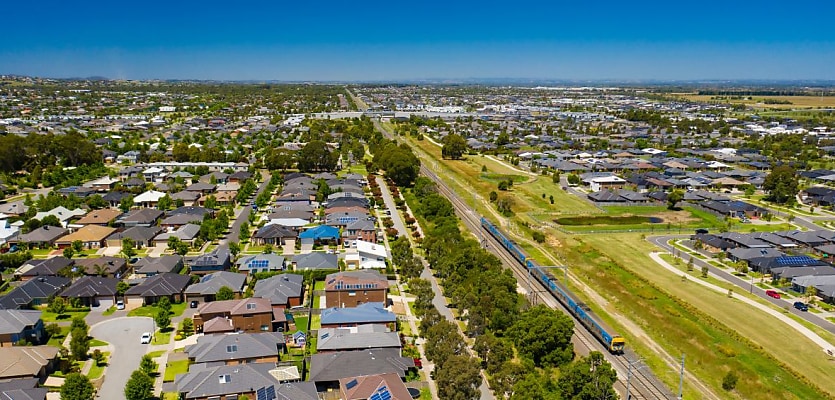While the Victorian government continues to promote higher-density housing in commercial precincts, it has set “lower and gentler height limits” for residential development in the state’s first 10 pilot activity centres.
The Victorian government has unveiled the updated plans for its first 10 pilot activity centres, which aim to increase housing density around certain city hubs and help deliver 60,000 homes in suburban areas by 2051.
The activity centre plans, revealed last year, introduced a reformed developer contribution pilot scheme to ensure infrastructure funding aligns with housing development in growing communities.
The plans for the pilot activity centres have now been updated, following two rounds of extensive community consultation, and will now impose “lower and gentler height limits” for developments located in residential areas.
Subject to gazettal, the plans are currently set to come into effect next month across the 10 pilot activity centres of Broadmeadows, Camberwell Junction, Chadstone, Epping, Frankston, Moorabbin, Niddrie, North Essendon, Preston (High Street), and Ringwood.
Minister for Planning, Sonya Kilkenny, said the new guidelines are about “giving young Victorians who are locked out of the housing market the opportunity their parents had”.
Revisions to pilot activity scheme after community feedback
The plans for each pilot activity centre have evolved, with consultation and feedback from local communities helping to inform the creation of lower height limits within each activity centre.
Despite these changes, activity centres still contain a “core” that designates busy commercial areas where taller buildings are suitable and a walkable “catchment” in the surrounding streets where low-rise development is preferred.
While the earlier draft plans specified a consistent four-storey height limit for developments across all proposed catchment areas, the updates will now divide these areas into inner and outer sections, each with distinct development conditions.
For developments within inner catchments closer to the core, the previous four-storey limit will still apply and will permit up to six storeys on larger blocks that are more than 1,000 square metres and have 20 metres of street frontage.
Outer catchments farther from the core will instead be subject to a new three-storey limit extending to up to four storeys on larger blocks, meaning that maximum heights will scale down depending on how far developments are from shops and transport.
Maximum heights will continue to apply for development within the core itself, using the fast-tracked “deemed to comply” process.
Developments in the core of Niddrie, North Essendon and Preston will be limited to 10 storeys, while those in the core of Broadmeadows, Camberwell, Chadstone, Epping and Moorabbin will be limited to 12 storeys.
The state government noted that Ringwood and Frankston will have taller maximum limits of 20 and 16 storeys, respectively, as local councils requested these conditions as part of their long-term planning processes.
The Victorian government also said that applications exceeding the respective height limits for their area would not be eligible for the fast-tracked “deemed to comply” process.
Looking forward, the state government also announced that developers building new homes within pilot activity centres will be required to make a monetary contribution from 1 January 2027 onwards, which will fund public infrastructure for pilot areas as they grow.
Victorian Premier Jacinta Allan said that “the status quo won’t cut it”, and the only way out of the housing crisis is to “build our way out”.
“We want more homes for young people and workers close to jobs, transport and services – so they can live where they want, near the things they need and the people they love,” Allan said.
The Property Council of Australia (PCA) welcomed the Victorian government’s update.
PCA Victorian executive director, Cath Evans, said the planning work would support a high number of quality homes near new or existing, often underutilised, infrastructure.
“Well-designed, accessible and vibrant activity centres are key to delivering affordable housing options, diverse employment opportunities and improved community outcomes,” Evans said.
“The property industry recognises there are important local conversations required about future infrastructure and open space needs for growing communities, and we look forward to contributing to those discussions.”
“This is an important initiative that will help unlock the infill supply our state needs,” Evans concluded.









You are not authorised to post comments.
Comments will undergo moderation before they get published.